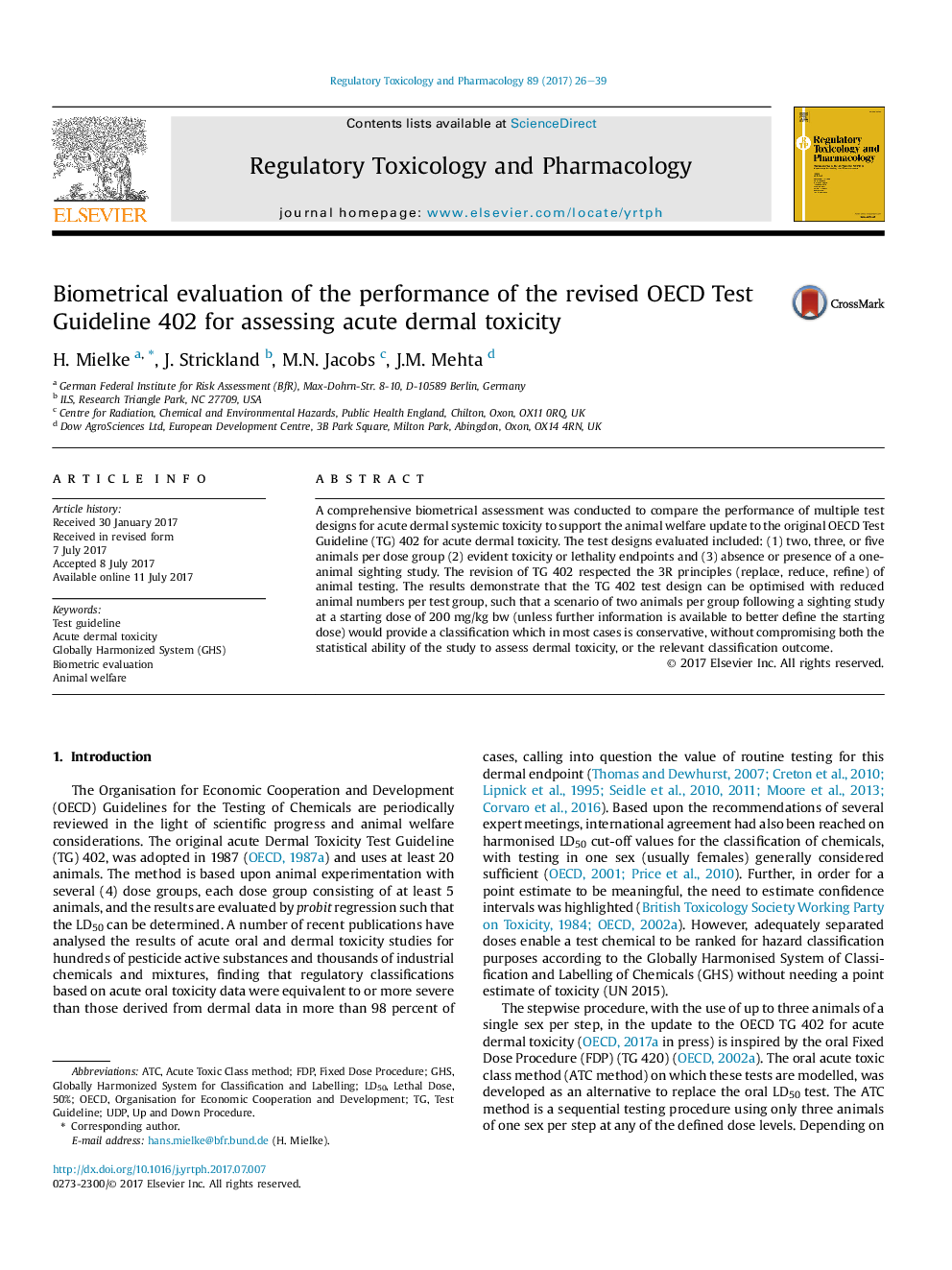| Article ID | Journal | Published Year | Pages | File Type |
|---|---|---|---|---|
| 5561186 | Regulatory Toxicology and Pharmacology | 2017 | 14 Pages |
â¢The TG 402 test design can be optimised with fewer animals per test group.â¢One-animal sighting study reduces animal use & increases performance of dermal FDP.â¢Evident toxicity used fewer animals and produced more conservative classifications.â¢Lethality produced more correct classifications, but used more animals.â¢Use of a novel visualisation tool to evaluate test design options.
A comprehensive biometrical assessment was conducted to compare the performance of multiple test designs for acute dermal systemic toxicity to support the animal welfare update to the original OECD Test Guideline (TG) 402 for acute dermal toxicity. The test designs evaluated included: (1) two, three, or five animals per dose group (2) evident toxicity or lethality endpoints and (3) absence or presence of a one-animal sighting study. The revision of TG 402 respected the 3R principles (replace, reduce, refine) of animal testing. The results demonstrate that the TG 402 test design can be optimised with reduced animal numbers per test group, such that a scenario of two animals per group following a sighting study at a starting dose of 200Â mg/kg bw (unless further information is available to better define the starting dose) would provide a classification which in most cases is conservative, without compromising both the statistical ability of the study to assess dermal toxicity, or the relevant classification outcome.
